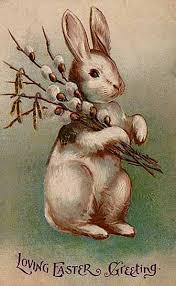Paul Vanderloos's Blog
January 1, 2021
Norse Influence
Norse mythology has a bigger part in all our lives than you may think. You have heard of Asgard and the Norse gods of Odin, Thor, Loki and so on. You have likely seen the latest movies with Chris Hemsworth as Thor and Sir Anthony Hopkins as Odin. If you are a Tolkien fan (Lord of the Rings, The Hobbit), you know of Middle Earth, elves, and dwarfs which were based roughly on the Norse realm of Midgard and the mythical creatures that work with Odin.
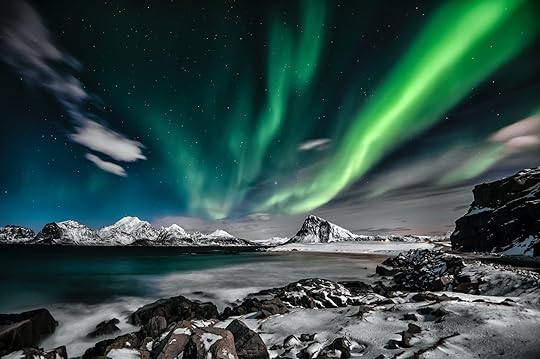
Did you know that even our days of the week lend their origins from Norse/Germanic folklore with Wednesday (Woden’s Day) and Thursday (Thor’s Day) named after Odin (Germanic ‘Woden’) and Thor. Tuesday comes from the Old English Tiwesdæg, meaning ‘Tyr’s day’. Tyr was the Norse god of combat and was responsible for punishing wrongdoers. The name Friday celebrates the Norse goddess, Frigg, the wife of Odin and associated with marriage and fertility.
Our celebration of Christmas towards the end of December supplanted the pagan festival of Yule which also has more than a smidgen of Norse associations. After Saint Nicolaus spawned the observance of gift giving in the world, pagan influences gradually morphed him into Santa Claus. In Norse folklore, Odin road across the skies with an eight-legged horse called Sleipnir and pulled a chariot which later was associated with a sleigh and the common reindeer often used to pull sleighs in Norway. Odin was also known to present gifts to people, and had elves who worked for him to make gifts. The fat and jolly Santa of today is a further embellishment by modern society. Odin also knew whether people were bad or good and at Yuletide, sailed through the skies rewarding the good and punishing the bad. Decorating trees at Yuletide was, you guessed it, a Norse tradition.
I used Norse mythology in my first book, The Wizard’s Sword (now being developed into a concise edition), in the naming of the messenger who brought the Wizard’s magic sword, Moongleam, to Eol where my main character, Mirrortac, found it. The name ‘Nido’ is ‘Odin’ spelt backwards. Coincidentally, I developed nine ‘worlds’ because of the significance of the number ‘9’ in folklore. There are nine realms in Norse mythology, but there is little semblance between my worlds and that of the Norse realms. I created my own different races as I felt that elves and dwarfs had already had their day in Tolkien’s stories and that of many fantasy writers.
Certainly, the Norse tradition is a rich source of folklore and inspires the imagination. Many novels and movies can attest to this.
__ATA.cmd.push(function() {
__ATA.initDynamicSlot({
id: 'atatags-26942-5ff0213e9c262',
location: 120,
formFactor: '001',
label: {
text: 'Advertisements',
},
creative: {
reportAd: {
text: 'Report this ad',
},
privacySettings: {
text: 'Privacy',
}
}
});
});
November 11, 2019
The Seventh Circle of Hell
Mythologies and fables are the source for many books and movies.
Something a little different but perhaps appropriate for the season, coming on the heels of Hallowe’en and at the beginning of November, known to Anglo-Saxons as Blotmonath or ‘the month of blood’ – a post about Hell! In religion and folklore, Hell is an afterlife location in which evil souls are subjected to punitive suffering, often torture as eternal punishment after death. The modern English word hell is derived from Old English hel, helle (first attested around 725 AD to refer to a nether world of the dead) reaching into the Anglo-Saxon pagan period. Hell appears in several mythologies and religions. It is commonly inhabited by demons and the souls of dead people. A fable about Hell which recurs in folklore across several cultures is the allegory of the long spoons. Hell is often depicted in art and literature, perhaps most famously in Dante’s Divine Comedy. Other religions…
View original post 774 more words
October 22, 2017
After the King: Tolkien’s heirs
I too have been influenced and inspired by Tolkien but have introduced other worlds and beings.
It is something of a relief, having looked last month at his critics, to turn this time to Tolkien’s many admirers. It would not be true to say that there was no such thing as epic fantasy before Tolkien: there was a tradition of English and Irish writers before him, such as E R Eddison and Lord Dunsany, and a parallel tradition also of American writers appearing in pulp-magazines such as Weird Tales and Unknown. The Lord of the Rings however altered reading tastes rapidly and lastingly. Several hundred English-language fantasy novels are currently being published annually. The influence of Tolkien on them is often apparent from their titles – Guardians of the West (David Eddings), The Fellowship of the Talisman (Clifford D Simak), The Halfling’s Gem (R A Salvatore) and so on, to name just a few. Most writers do better at concealing their literary ancestry, but the first…
View original post 1,593 more words


July 20, 2017
An Egyptian connection
What I love about my fantasy series is the ability to explore various mythologies, such as the Ancient Egyptians, and the theory that they had some connection with aliens. The theory goes that aliens visited thousands of years ago and organised the building of the pyramids, which were lined up with points in space that perhaps showed the way to the alien civilisation. Now, I am not suggesting that any of this is true, but it makes great material for a fantasy narrative. Therefore, in the third book of my series The Nine Worlds of Mirrortac, the book I have titled The Gold Sarcophagus, the ancient god associated with the sun, Ra, is resurrected from his sarcophagus deep in the Mediterranean Sea, and redevelops his plan, as part of a master race of aliens, to take control of a now modern world. His race is comprised of two types of human-like beings — the regular two-eyed people, and those with three eyes.
[image error]
The Uranian logo for the Universal Guardians, which includes the two races of Duoculi and Tresoculi (Two-eyed and three-eyed peoples)
Ra’s rise coincides with an event on one of two other linked planets and awakens his tresoculi (three-eyed) brethren on his home planet where there is a revolutionary uprising that had been in planned for some time, and kept secret from their duoculi (two-eyed) opposites who had been blissfully unaware of any threat.
This begins a chain of events which involves the alien Uranian (Universal Guardians) races, my erfin characters and their friends, and the people of Nerthule (Earth). Ra uses the power of gem crystals to mesmerise the population of Nerthule as well as uplift a hidden metal pyramid that has the power to transmit his thoughts and electric energy throughout the world. I base the pyramid on a Tesla theory that such a structure can create huge amounts of energy.
A war against Ra and his league of tresoculi hinges on the placement of the last Stone of Destiny, which when brought together with the other two stones, will destroy them and undo the power that Ra has through the triad arrangement of the stones on their respective planets.
Another aspect of mythology also ties in with Ra, and that is of Atlantis, which sunk to the bottom of the Mediterranean Sea thousands of years ago.
This last book of the series is to date (July 2017) in Beta mode for readers to give their feedback. A cover design has already been created by Irish graphic artist Michael Lenehan. Look out for this exciting finale to the series in the months to come.


June 15, 2015
The Race of Twilight
I had snow trolls in my original draft of The Wizard’s Sword, but took them out as they had no bearing on my story.
 Originally posted on Fabulous Realms:
Originally posted on Fabulous Realms:
Although Middle Earth is full of monsters that are highly original, Tolkien also introduces us to some fairly familiar foes: the trolls from The Hobbit, for example, are quite traditional in the way they are depicted. Although it must be said, by the standards of most trolls in mythology and fantasy, the three encountered by Bilbo Baggins in The Hobbit were mental giants. Bert, William and Tom spoke and understood the tongue of men and had an elementary, if faulty, knowledge of arithmetic. They were, none the less, turned to stone as a result of the quickness of wit of the wizard Gandalf and in this they conformed to myth and legend in more than one way. For the idea that trolls “must be underground before dawn, or they go back to the stuff of the mountains they are made of” is an ancient one, with the god Odin playing the same trick…
View original 946 more words


March 12, 2015
Fiddling with Graphic Figures
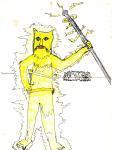
My Mirrortac.
Would you believe that I have been living with my favourite created character, the erfin Mirrortac, for 28 years!? My original impression of the protagonist of this three volume series (Vol 3 still cooking!) has been of a heavily furred being with cat-like ears and a extensively ‘bearded’ face. Here is one of my rather amateur drawings of that look. ��Notice he has no neck to speak of and he does not have a tail. While he may have some cat-like features, I have strayed away from making him and his erfin kin into cat-people. This view of the erfins and Mirrortac remained the same for a number of years as I redrafted The Wizard’s Sword and finally started work on Three Stones of Destiny.
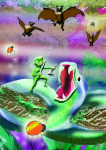
Heidi Counsell’s Mirrortac.
I wanted a design for the cover of TWS that was more professional than my efforts, so I engaged a local graphic artist, Heidi Counsell, to do up some designs featuring Mirrortac fighting a serpent (Snerk). Her interpretation was a little different, and she had added a tail initially. I had her remove the tail and went with this version that appears on the cover of my print version.
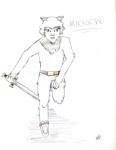
The anime form.
Later my daughter produced an anime version that departed further from the no-neck Mirrortac, but I found I could live with it and accepted that there could be various interpretations of the character.
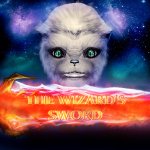 When I wanted to publish Three Stones of Destiny, I engaged Irish graphic artist Michael Lenehan to create yet another version for the ebook. The print book cover focused on the antagonist Yidu but Michael had created auxiliary versions of Mirrortac that I used elsewhere.
When I wanted to publish Three Stones of Destiny, I engaged Irish graphic artist Michael Lenehan to create yet another version for the ebook. The print book cover focused on the antagonist Yidu but Michael had created auxiliary versions of Mirrortac that I used elsewhere.
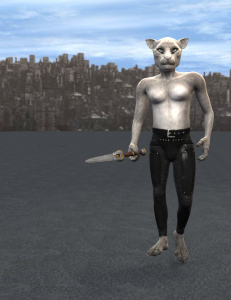
My Daz Studio version.
Lately, I have been dabbling with Daz Studio to create morphs that approximate the character, and the nearest I could get with what I have in the software, was this latest offering. I would prefer to see more fur and less human, but am restricted by what I can afford and what the software offers. It is a good software system that enables people to create animations. I have made a small animation but am still learning to simply create still figures and settings. This figure was created from a human form that allowed morphing and reforming.

January 12, 2015
Enter the Dragon
Got to love dragons. An enlightening look at Tolkien’s Smaug.
 Originally posted on Fabulous Realms:
Originally posted on Fabulous Realms:
The dragon Smaug is in many ways the centrepiece of both The Hobbit book and film series – no other character more often dominates covers, calendars and promotional art related to the story. It is no accident that a dragon plays such a prominent role in one of J R R Tolkien’s very first works of fiction – he did, after all, once famously say: “I desired dragons with a profound desire”. For Tolkien’s taste, however, there were too few dragons in ancient literature, indeed by his count only three – the Miðgarðsorm or ‘Worm of Middle-earth’ which was to destroy the god Thor at Ragnarök, the Norse apocalypse; the dragon which the Anglo-Saxon hero Beowulf fights and kills at the cost of his own life; and Fafnir, who is killed by the Norse hero Sigurd. There are elements of all three of these mythological dragons in Smaug, as well as some entirely of Tolkien’s…
View original 1,106 more words

September 22, 2014
The Twelve Most Important Gods in Norse Mythology
Good background material to base fantasy stories on.
 Originally posted on ThorNews:
Originally posted on ThorNews:
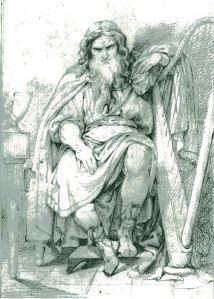 Brage is very wise and eloquent, and the god of skaldic poetry and prose. (Drawing by: Carl Wahlbom)
Brage is very wise and eloquent, and the god of skaldic poetry and prose. (Drawing by: Carl Wahlbom)
In the beginning there were only native forests and wasteland. The Aesirs, one main group of Norse gods, cleared places to stay, both for themselves and the humans. They named the human’s home Midgard – because it is placed in the middle of the world. And in the middle of Midgard – so that the humans should not feel lonely and abandoned – the gods built a place for themselves: Asgard.
Asgard is a huge castle surrounded by thick walls. To get there you have to ride over the rainbow Bifrost. Strong defenses were built around Midgard as protection against the wild and unknown outside where dark and sinister forces are raging. There – in Utgard and Jotunheim – giants and trolls live. Everything is arranged like tree-rings. And furthest out, in…
View original 427 more words


April 19, 2014
Eostre celebration
Easter is now a time for Christians to recall the death and resurrection of Jesus Christ (not his surname), but our celebration of the event today is a combination of the Christian and pagan beliefs and mythology. The name Easter itself derives from the pagan goddess Eostre of old English times, and the word is said to derive from Germanic Austron, meaning Dawn. And this further derives from Indo-European for ‘to shine‘. This is no accident, as the Christian missionaries found it the best way for pagans to accept a new faith is to supplant a pagan celebration with a similar connotation. Jesus’s resurrection is a defeat of death and a new beginning for humanity, in other words, a dawning of a new covenant in Christian terms.
The idea of the Easter bunny that lays eggs doesn’t make sense these days, but a journey into the past clears up the mystery somewhat. The bunny also has its origins with the goddess Eostre who is closely associated with the hare (not rabbits). The celebration for Eostre is in the spring when life is renewing. Both the hare and eggs are associated with fertility and new life. Again, early missionaries adapted the idea of the hare and the eggs to the Christian Easter celebration. There are a number of other theories to the origin of the Easter bunny and coloured eggs that may have also influenced the tradition, but it is my opinion that the adaptation of the pagan feast is the most plausible. For example, Jews — who were the first to become Christians — had to abstain from eggs during the period of Lent preceding Easter. They roasted the eggs to preserve them during this time, then at Easter broke their fast from eggs with a celebration. However, it is interesting to note that modern Christians (especially Catholics) abstain from meat during Fridays in Lent (at least on Good Friday) but will eat eggs instead, or fish.
Whatever your belief or interest in Easter, I extend to you best wishes. Take care on the roads and enjoy the celebration.


March 16, 2014
Ancestral history of Erfins
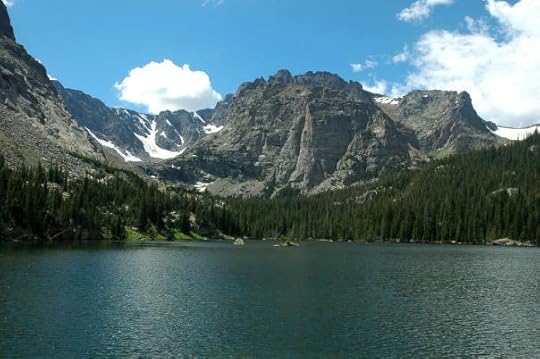
A landscape similar to Eol with Mateote in the background.
In fantasy there is no real history, of course, but in order to give things some background to how they came to be the way they are, it is important to create some history. This was important, especially for my second book, as all of Mirrortac’s other lives were as individuals from ancestral races, going back to the original tribal ancestor that he meets in Three Stones of Destiny — the Roznogh. The planet in which all of the first book takes place is Mareos, which has nine orbits of its moon, Mogog, in a single Mareos year. Let us now explore the ancestral history that finally leads to the erfins living in their valley of Eol, effectively isolating them from all their remaining ancestors.
The ROZNOGH we already know in Three Stones of Destiny, live in clans in the tundra lands of Yidrogh in the far north of Mareos. The clans consist of clan elders, maja-taks, who are sacred spell makers, and the hefty hyfnuks who are responsible for collecting the hyfnu weed and killing animals for food. There are also the regular roznogh people.
In the 9000th moon of their history, there is an extremely cold period when the Great Viyu (numbness) brings heavy snow falls. The roznogh survive by living near an area of hot springs.
The Stone Wall of Viyu (Glacier) comes in the 9010th moon, dividing the land of Yidrogh. Some tribes are caught on the southern side of Yidrogh, fleeing to warmer lands to the south.
The glacier retreats on the 11,800th moon, but by this time the southern tribes have formed into the UZDREE.
12,007th moon: The maja-tak seek more freedom to exercise their spellcraft, challenging clan elders. The maja-tak seize power from the clan elders who are exiled along with a group of loyal followers. The power play continues between the maja-tak spell casters, forcing the division into two factions — the URDAN and the MADREE clans. Skirmishes break out between the Urdin and Madree but the Madree gain control, forming a powerful ruling clan that reigns for many moons.
13,851st moon: The Monsters-of-the-Deep-Earth (earthquakes) create great destruction in the land, swallowing villages and spitting fire out of the volcanic mountains. The Madree flee the great under-gods of fire, and escape south across a narrow neck of land which is swallowed up by the angry gods of the Great Waters. Plumer-Ra and the other Islands of the Meretees are formed at this time.
13,860th moon: The Madree have been scattered into groups all over the southern lands and each settles to form new clans — RADREE, HUGHWA, URTAK, MADIN and ERFIN.
13,900th moon: Under the maja-tak spell casters, the clans thrive and expand their territories, exploring lands until clans encounter each other.
14,000th moon: Border skirmishes erupt as the power game begins anew between the five clans. Warriors are trained and their short swords bound by various spells to enhance their power over their enemies. Wooden swords give way to ones of metal with hilts adorned in precious stones.
14,005—16,154th moon: Battles rage between the five clans as each pits its might against each other. Finally, only two clans remain — the Madin and Erfins. The Madin are forced into the mountains where they maintain guerrilla style raids on outlying erfin villages.
16,155—17,000th moon: The Erfin empire reigns with battles continuing against the Madin mountain clans.
17,008: The hero warrior Merftac is born to the erfins of Fot. He grows up to lead a major offensive in the 17,146th moon against Madin mountain clans, forcing them to flee to the end of the earth where they are slaughtered on a precipitous mountain ridge and cast below into oblivion. The valley below the Mountain at the End of the Earth (Mateote) is so beautiful and richly endowed with nif-grass and fote fowl that Merftac convinces his maja-tak ruler to shift the people there in the place they name Eol. Merftac is dubbed Thane of Fotwood at the 17,164th moon for his service as a great warrior chief.
17,170: The erfin warriors grow restless, and many brawls break out. They start to challenge the authority of the maja-tak. Merftac realises that he must find a solution to their idleness.
17,180: Nite-wolves, attracted by the potential prey in the previously empty valley of Eol, grow in numbers in the woods east of Eol. Lorcs predate in the stream and lake to the west and south, resulting in the deaths of erfins. Merftac sets his warriors to work hunting nite-wolves and protecting villagers.
17,188: Alien demi-gods appear from beyond Mateote. They work powerful magic and tell of the wondrous worlds beyond the mountains thought to be the end of the earth. Nite-wolves retreat to deep within the woods while the demi-gods convince Merftac of the benefit of exploring these new worlds. Under their charm, Merftac and his warriors follow them over the mountain, promising to return once these new worlds are scouted. These same aliens also visit the Meretees people during this time period.
17,200: The maja-tak, realising their warriors would never return, seize the opportunity to assume supreme power without fear of challenge by restless warriors and their ‘charmed’ swords. They announce that Mateote is their god and warn erfins never to scale the great peak as oblivion awaits them on the other side. They brand the demi-gods as deceivers from the Netherworld who robbed them of their warriors.
17,210: The maja-tak form the priesthood of Mateote. The spell language of Maja is declared sacred and forbidden among the common erfin folk. In the ensuing years, the High Priests of Mateote establish firm control of Eol which becomes their prison as there are no warriors to kill the nite-wolves and slimy lorcs. The erfins settle into a subsistence lifestyle of harvesting nif-grass and herbs as well as raising the fote fowl for eggs and meat.






